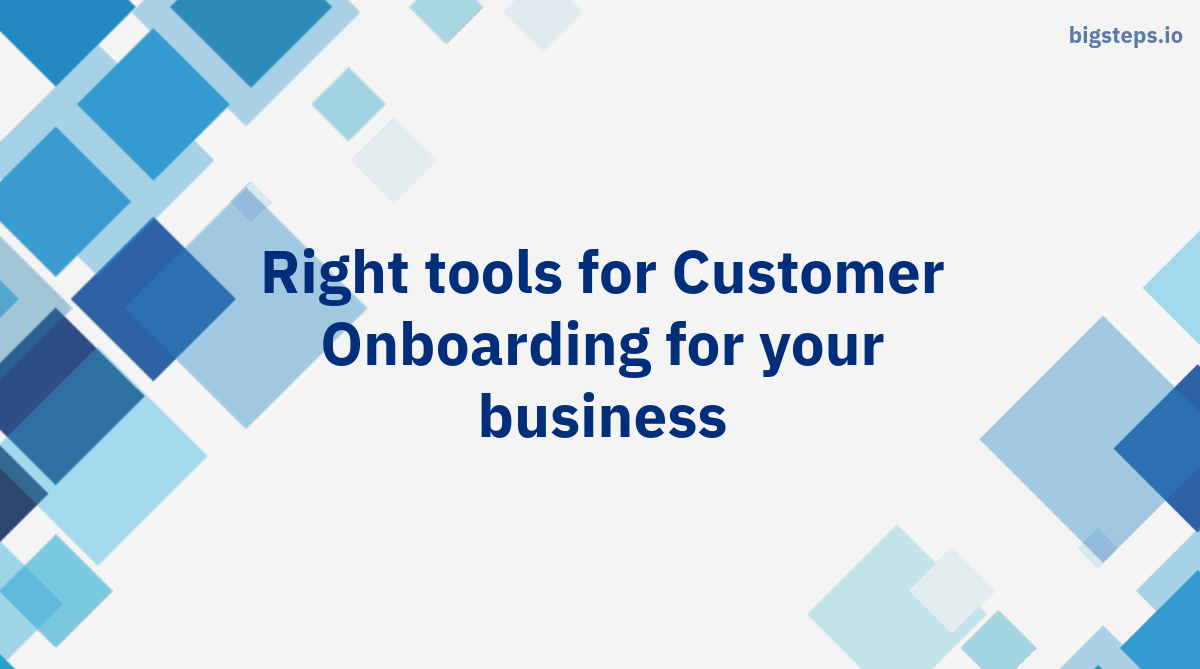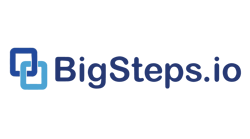Opting for the Right Tools for Customer Onboarding & Implementation
Read Time 4 mins | Written by: Vaibhav Awachat

In the ever-evolving digital business landscape, understanding the tools at your disposal can make a considerable difference in your operational efficiency. In this discussion, we're taking a closer look at two specific types of tools - Customer Onboarding Software and Project Portfolio Management (PPM) Tools. Specifically, we'll examine how a purpose-built customer onboarding software differs from PPM tools like Asana and ClickUp.
What is Customer Onboarding Software?
As the name suggests, customer onboarding software is purpose-built to manage cross-organisational projects. It enables the setup of mutual action plans and task tracking across team members of various organisations. Features of these software mostly include private and shared chat, asynchronous document collaboration, secure data collection with custom forms, and customer sentiment analysis.
It’s worth noting that customer onboarding often entails using repetitive tasks across similar customers. Therefore, the software's reporting mechanisms are optimised to capture information that can help measure cycle time, identify process bottlenecks, manage workload, and crucially, analyse the critical path.
Common setups include:
- BigSteps
- Slack Connect + Google Doc / Dropbox Paper + Asana / Click Up (internal)
- Google Drive + Email + Slack Connect
- PPT + Email + Google Doc + Dropbox + Support Chat
Project Management Tools : An Overview
Also known as PPM, Project Portfolio Management software is quintessentially designed to plan and track tasks within multiple projects across an organisation. Tools like Asana and ClickUp efficiently ensure accountability among team members, providing visibility, and in essence, simplify the process of remembering and tracking what needs to be done and when.
What’s unique is that many PPM tools also offer real-time communications tools like chat and document collaborations, along with robust reporting and dashboards. When adopted well across an organisation, it significantly reduces the learning curve and cuts costs by replacing many disparate tools.
We noticed a few common combinations
- Slack/MS Team + Notion / Confluence + Asana / Click Up
- ClickUp
- ClickUp + Slack
Key Differences Between Customer Onboarding Software and PPM Tools
Despite similarities like in-built project management, real-time chat for synchronous communication, and document collaboration features for asynchronous communication, purpose-built customer onboarding software and PPM tools like Asana and ClickUp exhibit crucial disparities in focus and function.
PPM tools primarily streamline project planning within a single organization, aiming for improved internal task and team management. Conversely, customer onboarding software is crafted with a broader scope—facilitating collaborations across multiple organizations and orchestrating a smoother journey for customers from the point of sale to the successful use of a product or service.
One might ask - why not utilize the same software for both internal management and customer onboarding? Here, the complexities lie in the operational differences and target audiences of PPM and onboarding tools. Using a PPM for customer onboarding often implies adding customers to a paid seat—leading to potential hesitation from IT teams due to compliance concerns. Furthermore, if your team has implemented Single Sign-On (SSO) security, guests cannot always be added to certain tools.
Customer onboarding software, on the other hand, extends its utility beyond the boundaries of your organization. Not only does it enable your customers and executive sponsors to stay updated about ongoing projects, but it also allows them to be proactively involved when their intervention is needed. It seamlessly integrates with your customer's preferred communication tools—like MS Teams or Slack. This design allows your team and clients collaborate within their extended team. Thus, progress can be made more swiftly, eliminating worries about sharing sensitive information or circumventing compliance protocols.
In essence, though these tools share a collaborative core, their critical differences lie in their primary use-cases, operational design, and end-user experiences.
Conclusion
The key takeaway here is to understand the distinct differences between these two platforms - while they may seem similar on the surface, their use cases, and particularly, ideal users, differ fundamentally. By understanding these differences, businesses can make a more informed decision about which tool is right for them.
Whether you're looking for a way to streamline internal communications or onboard customers more efficiently, there's a tool designed to meet your needs. Knowing which one applies best to your situation is the first step in optimising your processes.
Streamlining Operations and Exceeding Expectations with BigSteps
Your Aide in Effective Project Planning & Execution
BigSteps is reshaping how businesses approach project planning and stakeholder management. Its intuitive design lets you meticulously plan and set tasks before drawing in the team. Once you're prepared, delegate roles to your team or stakeholders — BigSteps does the rest. It ensures efficient task distribution, sending out invitations, scheduling reminders, and administering follow-ups. This effortless management allows you to focus on what truly matters, empowering your team to deliver their best.
Your Unified, Secure Digital Asset Management System
In the increasingly digital world, managing shared tasks, documents, links, and files in a secure and organized manner is crucial. BigSteps serves as a unified hub for all your digital assets. It implements clear distinction between resources intended for your team and those shared with clients.
Stay Agile and Accountable with BigSteps
As organizations evolve, BigSteps effortlessly syncs with these shifts. It prioritizes flexibility, diligently tracks project progress and enshrines accountability within team members. With BigSteps, adaptability is ingrained, ensuring smooth transitions and continuous growth.
Tailored Workflows and Secure Data Collection
BigSteps hands you the reins, enabling you to customize your workflow journey as per your needs. From selecting pre-defined flows to crafting your unique ones, you dictate your operational course. Coupled with this flexibility, BigSteps offers a secure environment for data accumulation through its end-to-end encrypted, built-in forms.
Do not just take our word for it - experience the BigSteps difference firsthand. We extend an invitation for you to explore our platform, discover its powerful capabilities, and understand how it can be an integral part of your journey towards operational excellence.
Take a big step forward with your customer onboarding needs
- choose BigSteps.
